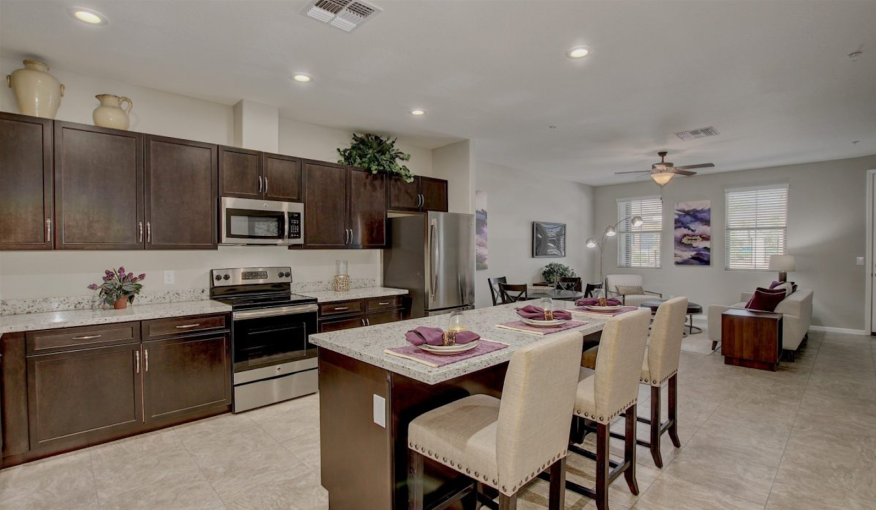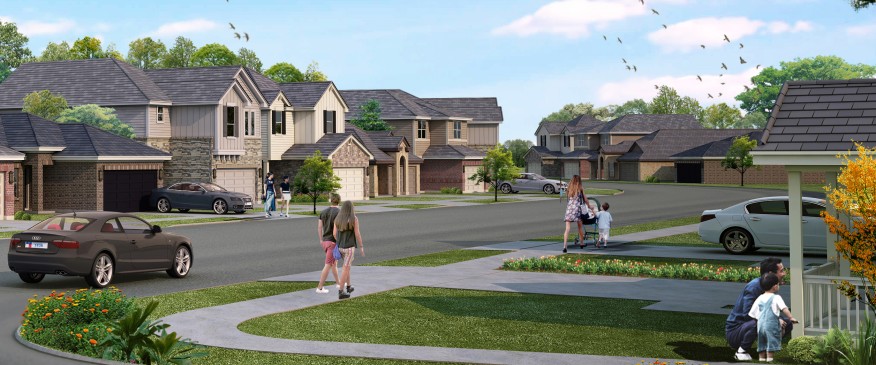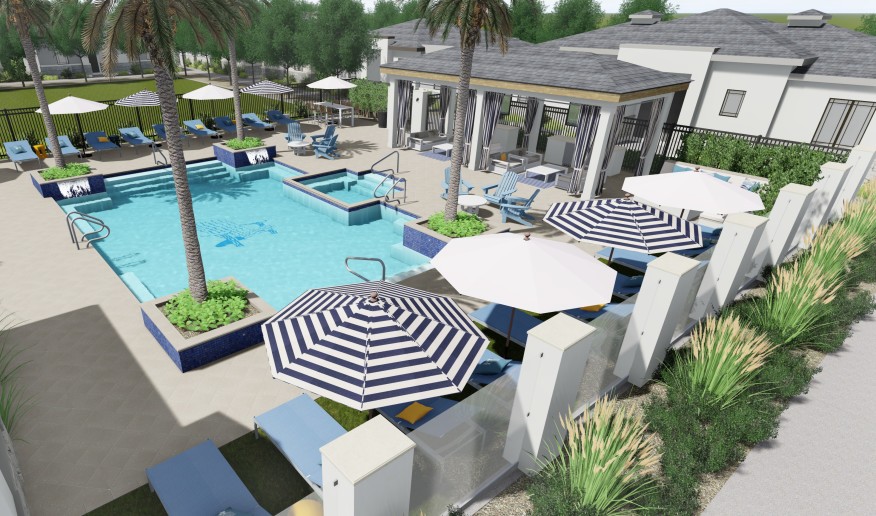The single-family rental market is booming, and developers tapping into the segment’s opportunities are thriving. Here’s why.
The rental market is hot. Since 2006, the number of Americans living in rental properties has soared to nearly 37%, the largest amount since 1965. Over the same 10-year period ending in 2016, the number of households lived in by owners declined from 76.1 million to 75 million in the aftermath of the housing crisis, according to Census Bureau data.
One sector of rental housing has enjoyed a particularly dramatic rise in the past decade: Single-family for rent is the fastest-growing segment of the U.S. housing market, according to an analysis by the Urban Institute, which reports that growth in single-family rentals has outpaced the growth of both single-family for-sale and multifamily housing in recent years—and it’s predicted to keep growing in the years ahead. According to the National Association of Home Builders (NAHB), 56% of the gains in rental housing stock from 2005 to 2015 were due to single-family homes.
The demand for single-family rentals has prompted a number of developers to tap into the market with a new product: cohesive single-family rental communities filled by niche renters with lifestyle needs that are unlike those of apartment renters.
Economic Factors Create Perfect Storm
Industry experts say the current economic climate has created a perfect storm for the single-family rental market’s success. Student debt, a tight job market, and the inability to save for a down payment have kept a number of potential home buyers out of the market.
“Credit markets are still extremely tight, and a lot of people don’t have the right credit score. With stricter lending terms than ever, some consumers aren’t even potential participants in the market,” says Dennis Cisterna, CEO of Investability Solutions, a real estate investment firm in the single-family rental space. “[These factors] are eliminating people from homeownership. Without more alternative solutions to getting people into homeownership, whether that’s a low–down payment mortgage or assistance programs, there’ll be a ramp-up in rentership, which presents a great opportunity for companies to be able to grow with single-family rentals.”
While many middle-class renters lack the money for a down payment, they do make enough to spend extra on a rental home. Matt Blank, principal at Scottsdale, Ariz.–based build-to-rent developer BB Living, says the average customer at one of the builder’s communities is a couple in their late 30s with two children and an annual income of $80,000 to $110,000. With that, they have the cash flow to pay the monthly rent on a single-family home, which is around $1,600 at one of BB Living’s properties.
BB Living has built six communities in the Phoenix metro area and is close to reaching the 1,000-unit benchmark. When the business first launched in 2012, BB Living offered consumers the option to either rent or purchase the homes, a strategy that allowed the company to figure out what the market needed while it got up and running.
“We sold 35 houses that way and rented 35 houses at the same time—the market seemed to want both options at the time,” Blank says. “But once we were able to prove the rental market and prove that people actually wanted to rent single-family homes, we were able to secure financing and stop the for-sale effort to focus exclusively on rentals.”
BB Living’s communities are located in master-planned communities that are already fully outfitted with neighborhood amenities like swim parks, golf courses, and large communal spaces. The company will soon break ground on its first stand-alone community of 217 single-family rental units with a resort-style pool, workout facility, dog park, and walking trails. The units will range from 1,500 to 2,400 square feet and include three to four bedrooms and a two-car garage.

Renters by Choice
Economics isn’t all that drives consumers to rent instead of buy; some simply aren’t interested in owning a home.
“I think you also have to realize that the dream of owning a home isn’t as high of a priority on people’s list going forward,” says Mark Wolf, CEO and founder of Irvine, Calif.–based AHV Communities, a developer that builds single-family rental communities in Texas. “Part of that is residual from the downturn, and part of that is that we’re just a much more experience-driven society nowadays and are more portable. People don’t live in their house for 30 years anymore, and they move much more for jobs, so this shift in the way people live their lives means that having the portability of a lease while still being able to enjoy the luxury of a home is a perfect combination.”
In 2016, AHV Communities opened Vickery Grove, its first community of 82 single-family homes in San Antonio, all of which were built specifically as rentals. The homes range in size from 1,542 to 1,988 square feet, and rental costs across all of the company’s communities range from about $1,865 to $2,350.

The company says the communities of detached homes for rent are like a hybrid between a single-family and a multifamily development—they’re fully amenitized, managed, maintained, and operated by a property manager and feature pools, fitness centers, clubhouses, dog parks, walking trails, and community events. Everything is taken care of for renters when it comes to landscaping and maintenance, so residents can enjoy the lock-and-leave lifestyle of renting.
—Mark Wolf, CEO, AHV Communities
Downsizing baby boomers also are attracted to single-family rentals because they can live in a home similar to what they’re used to without sinking retirement cash into a down payment.
“Boomers may have lost their home in the downturn or don’t want to purchase a new home but also don’t want to rent in a high-rise building with stairs or street noise,” says Todd Wood, CEO of Scottsdale, Ariz.–based Christopher Todd Communities, which has five single-family rental communities under way in the Phoenix metro area.
The firm’s gated communities feature 136 to 313 single-story, detached, one- or two-bedroom homes ranging from 688 to 1,022 square feet and renting for $1,050 to $1,350. The homes offer a private backyard, a dog door, and a smart-home automation system that lets residents control their locks, thermostat, doorbell camera, lighting, and security cameras with a smartphone.
Like other rental communities, the projects by Christopher Todd Communities are amenitized with pools, spas, barbecue areas, fitness centers, and event lawns for both residents’ use and events put on by management.

“We’ve come up with [a housing product] that’s in between traditional homes and vertical apartments, and we call it ‘detached horizontal living,’ ” says Wood of the communities, which are leased and managed by a third-party company. “It’s easy for renters to look at the homes and say, ‘I can pay the same price as an apartment, but I don’t have to walk up three flights of stairs and I have my own backyard.’ We have a lot of interest and demand for the product from people who still want to rent, though in a different environment than a multifamily building.”
Multifamily Move-Up
Lifestyle changes, like having children and therefore needing more space, combined with soaring new-home costs in some markets have left some households at a crossroads—a one- or two-bedroom apartment no longer provides the space they need for their growing family, but they may not have the financial means to purchase a home, notes Robert Dietz, NAHB’s chief economist and senior vice president for economics and housing policy.
“Single-family rentals are driven by this demographic wave that’s the new part of housing demand, which is the millennials moving from their 20s to their 30s,” Dietz says. “You have to think about the kind of household that’s going to be moving from a multifamily unit, and wants to move based on structure type, but may not have the means to complete a sale.”
Single-family rental community developers say they don’t see themselves as a threat to single-family or multifamily builders, but rather as an alternative that provides a housing product type for renters with a specific set of needs.
“We think we have a really symbiotic relationship with multifamily. We think people are going to grow out of multifamily—there’s a whole cohort of people who want to be renters, but they can’t live in a one- to two-bedroom multifamily unit because they need more space, and there are very few three-bedroom units out there,” says BB Living’s Blank. “That’s where our communities come in. The millennial generation is growing up and having kids, and as they move out of multifamily, we have product for them to move into—bigger units.”
Source: Multifamily Executive Magazine